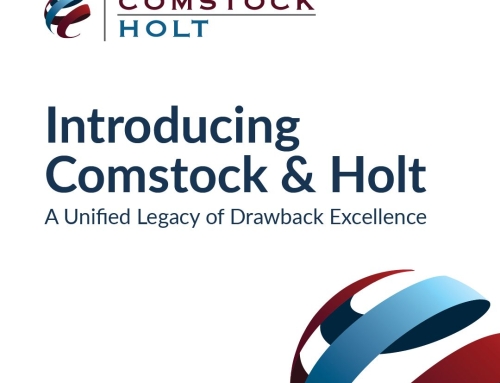Disposition, Destruction, Drawback
Did you know that dysfunctional inventory – aka the merchandise taunting from the back of the warehouse which exceeds demand, has expired, or may not be up to specification – can contribute to your company’s duty drawback program? Overstock retailers and waste facilities have been profiting from dysfunctional inventory and it is time to put this merchandise to use for your gain! While recovering the duties and fees will not equate to the full commercial value that would have been recovered under normal circumstances, incorporating this merchandise into your duty drawback program can reduce the burden on the supply chain by providing an alternative source of revenue while keeping your dysfunctional inventory out of the open market.
Disposition and destruction of merchandise, even recycling, can be eligible for duty drawback. Customs and Border Protection (CBP) has the right to observe the activity and still requires, upon request, documentation to support the drawback claim. To be eligible, the disposition or destruction of manufactured products must be for merchandise that was not put to its intended purpose prior to the disposition or destruction. We understand your company may not want to go through the process of allowing CBP the opportunity to witness each destruction, but there is a means to alleviate this burden. Just like exportation, CBP allows a claimant to apply for a Waiver of Prior Notice of Intent to Destroy as well as a Retroactive One-Time Waiver. This means the days when you have to provide CBP the opportunity to witness the act each time there is a disposition or destruction are long gone!
So, what qualifies as a disposition or destruction? CBP defines destruction as “complete destruction so that the merchandise or articles have no commercial value.” CBP also states that any value recovered by the claimant “must be deducted from the value of the imported merchandise that is destroyed, or from the value of the merchandise used, or designated as used, in the manufacture of the article.” While they specifically state destruction, drawback practices have shown that there may still be an opportunity when there is solely disposal of the merchandise.
The documentation needed for each disposition or destruction to recover drawback can vary based on what is available, but the following are critical components of a disposition or destruction:
- Withdrawal from inventory
System screen print or other inventory record proving date and fact of withdrawal of the specific merchandise for disposition or destruction. - Pickup and Transportation
Documentation from transporter verifying date and fact of merchandise transportation and quantities. - Receipt at Disposal/Destruction Facility
Report from disposition or destruction facility confirming date and fact of receipt of the specified merchandise at the correct quantities. - Certificate of Disposal/Destruction
A certified letter confirming disposition or destruction of merchandise in compliance with 19 CFR § 191.2(g).
The dates, materials, quantities, and document or transfer identifiers should tie through the document trail. If there is no link between withdrawal to the pickup document, the pickup document to the receipt report at the disposition or destruction facility, and the receipt report to the disposition or destruction, then there is no way to validate each step and prove that the exact merchandise withdrawn was disposed of or destroyed.
Understanding how you can make dysfunctional inventory part of your drawback program can provide some relief when it comes time to disposing or destroying merchandise. Make sure to talk to your duty drawback service provider or account manager about your program to see if you can take advantage of these opportunities!
From the desk of: Tim Vorderstrasse






